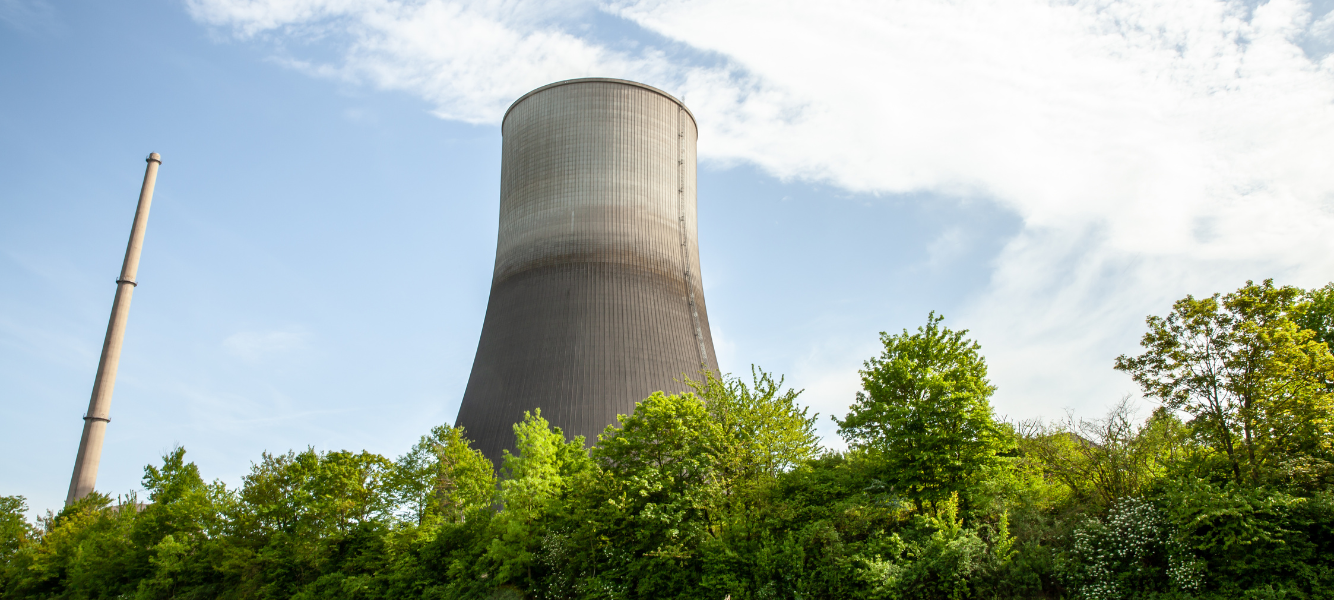The UK’s nuclear decommissioning sector is one of the most complex and high-stakes industries in the country.
From Sellafield in West Cumbria to Dounreay on the far north coast of Scotland, these projects are dismantling decades-old nuclear facilities, managing hazardous waste, and restoring sites to safe conditions for future generations.
It’s not a quick job – the NDA estimates that fully cleaning up the UK’s civil nuclear legacy will take more than 100 years and cost over £130 billion.
The Nuclear Decommissioning Authority (NDA) oversees 17 sites across the UK, employing around 17,000 people in over 900 roles.
Without a strong pipeline of skilled people, projects risk delays, budget overruns, and even regulatory intervention.
As the NDA’s Chair warned in 2023, there are “considerable challenges in recruiting and retaining staff in a very tight labour market, with nuclear and other high-level skills at a premium”.
Here are the five most pressing recruitment challenges facing the sector today – and what’s being done to tackle them.
1. Shortage of skilled nuclear workers
If you ask anyone working in nuclear decommissioning what keeps them up at night, there’s a good chance the answer will be “skills” – or more specifically, the lack of them.
The shortage is the sector’s most pressing recruitment headache, and it’s getting worse.
Across civil and defence nuclear, the UK will need an estimated 40,000 new recruits by 2030, which is more than double the current recruitment rate.
Between 2023 and 2024, the workforce grew from roughly 83,000 to 96,000 – a healthy increase on paper – but the Nuclear Workforce Assessment warns this still isn’t enough to meet rising demand.
The gap is widening, not closing.
The shortage is most acute in specialist roles.
Decommissioning needs a blend of nuclear-specific expertise (radiation protection, waste management, safety case authorship) and transferable engineering skills (mechanical, electrical, control systems).
Health physicists, reactor physicists, and experienced safety engineers are particularly hard to find.
These aren’t skills you can pick up in a few months – they often require a decade or more of education, training, and site experience.
Why the shortage exists
The roots of the problem go back decades.
After the major wave of nuclear builds in the 1970s and 1980s, the UK slowed its investment in new reactors, and many training programmes were scaled back.
For much of the 1990s and 2000s, the industry wasn’t seen as a growth area, so fewer graduates pursued nuclear engineering or radiological sciences.
Those who did often went into defence or research rather than decommissioning.
Fast forward to today, and we’re in a very different landscape.
Decommissioning work is expanding – more Magnox reactors are shutting down, waste retrieval at Sellafield is ramping up, and hazard reduction is moving into technically challenging phases.
At the same time, the UK is embarking on a new nuclear build programme and modernising its defence nuclear fleet. All of these require similar skill sets. Demand is up, but the talent pipeline hasn’t caught up.
What the impact looks like on the ground
The NAO’s 2024 report on Sellafield found “inadequate numbers of suitably trained staff” in certain areas, leading to maintenance backlogs and, in some cases, temporary facility shutdowns because there weren’t enough people to operate them safely.
At Magnox sites, delays in hiring specialist contractors have slowed down dismantling work.
At Dounreay, sourcing qualified electrical engineers for high-voltage systems has required nationwide searches and relocation packages. In every case, a missing skill isn’t just a recruitment problem – it’s a project delivery and safety problem.
Vacancies in safety-critical roles can also have regulatory consequences.
The Office for Nuclear Regulation (ONR) requires that all licensees maintain Suitably Qualified and Experienced Personnel (SQEP) for their operations.
If a site cannot demonstrate it has enough SQEPs in a particular area, ONR can – and sometimes does – limit or halt certain operations until staffing is stabilised. That’s not a position any operator wants to be in.
What’s being done about it
The good news is that the shortage is widely recognised, and significant action is being taken:
- Government and industry investment: In 2023, a joint plan was launched to invest £350 million in public funding and £400 million from industry into nuclear skills. The goal is to create over 8,000 training opportunities, double the intake of apprentices and graduates, and build a skills pipeline that can meet the 2030 target.
- On-site training reform: Sellafield Ltd has restructured its training programmes to focus on getting people competent for key roles more quickly – without compromising safety or regulatory compliance. This includes modular training that can be tailored to different career entrants, from school leavers to experienced engineers from other sectors.
- Early-career recruitment: The NDA group has dramatically increased its apprentice and graduate intake. In 2023–24, Sellafield recruited 344 trainees, the NDA recruited 67, and across the group there are now over 1,500 apprentices and graduates in training – the highest number on record.
- Cross-sector recruitment: Programmes are in place to retrain skilled workers from oil & gas, defence, and heavy industry for nuclear decommissioning roles. While this doesn’t solve the shortage overnight, it expands the candidate pool and brings in valuable experience from other regulated environments.
The bottom line
Without addressing the skills shortage, the UK’s nuclear decommissioning mission risks slowing down just as it needs to speed up.
The combination of large-scale investment, smarter training, and targeted recruitment from adjacent sectors is a solid start – but with demand outpacing supply, every site and employer in the NDA estate is feeling the pressure to do more, faster.
2. Competition from new nuclear and other sectors
If the skills shortage wasn’t tough enough on its own, the sector has another problem: everyone else wants the same people.
Nuclear decommissioning is now competing for talent with some of the UK’s most high-profile and well-funded engineering programmes, both inside and outside the nuclear world.
The civil nuclear expansion plan alone is ambitious.
The government’s goal is to deliver up to 24GW of new nuclear capacity by 2050, including mega-projects like Hinkley Point C, Sizewell C, and the deployment of small modular reactors (SMRs).
These builds require armies of engineers, project managers, and skilled trades – and they need many of the same qualifications and clearances as decommissioning roles.
Then there’s defence.
Programmes such as the AUKUS submarine partnership and the Dreadnought-class ballistic missile submarines are pulling from the same specialist pool of nuclear-qualified engineers and safety professionals.
Add in the ongoing demand from the oil & gas sector (particularly offshore decommissioning), the renewables boom, and major transport infrastructure like HS2, and you have an extremely crowded talent market.
Why competition is so fierce
The main reason is overlap. Nuclear safety engineers, radiological protection advisers, and mechanical fitters with nuclear clearance are not easy to come by.
When multiple projects are live at the same time, they can end up competing for the exact same CVs.
Pay also plays a role. While NDA group employers offer stable, long-term careers, private-sector new builds or defence contracts sometimes have more flexibility to offer higher salaries or short-term “golden handshakes” to secure scarce talent.
For younger engineers, the excitement of building something new in a high-profile project can also be a draw – especially if the location is more appealing than some remote decommissioning sites.
The impact on decommissioning
- Slower hiring: The average time-to-hire for a permanent nuclear role can exceed 60 days, and that’s before factoring in notice periods.
- Higher turnover: Decommissioning projects sometimes lose experienced staff to new builds mid-project, forcing costly and time-consuming replacements.
- Project delays: Specialist roles such as control & instrumentation engineers or safety case authors are critical path positions – without them, certain work simply cannot proceed.
The NAO report on Sellafield stated that the site is “facing increasing competition from military and civil nuclear programmes for both workers and supply chain”.
When your supply chain is also struggling to recruit, delays compound quickly.
How the sector is responding
- Employer branding with purpose: Decommissioning employers are leaning into the environmental and societal impact of their work. The NDA often frames its mission as “one of the most important environmental restoration projects in the world”, which resonates with candidates looking for meaningful work.
- Career stability: Projects like Sellafield’s hazard reduction are multi-decade programmes, offering job security that few industries can match.
- Collaboration over poaching: Through the Nuclear Skills Strategy Group (NSSG), employers are sharing skills forecasts and exploring joint training investments to grow the talent pool rather than cannibalise it ).
- Specialist recruiters: Agencies with deep nuclear networks, like Astute, can find passive candidates who aren’t actively on the job market but may be persuaded by the right opportunity.
The bottom line
Competition isn’t going away.
In fact, with new builds ramping up and defence programmes expanding, it will likely intensify.
That means decommissioning employers need to be sharper in how they sell their roles, faster in their hiring processes, and more proactive in building future skills pipelines.
3. An ageing workforce and retirement wave
Even if the skills shortage and competition from other sectors weren’t pressing enough, the nuclear decommissioning sector is also facing a demographic time bomb.
A significant proportion of its most experienced people are nearing retirement, and when they go, they take decades of hard-won, site-specific knowledge with them.
At Sellafield, one-third of the workforce will be eligible to retire in the next decade.
Across the wider UK nuclear sector, around 10% of workers are already over 60.
In certain technical disciplines, that proportion is even higher.
Why it matters
Decommissioning is uniquely dependent on “institutional memory” – the unwritten knowledge of how a facility was built, modified, and operated over decades.
Older staff may know exactly why a certain valve was installed in 1987, or how a past incident was handled, and that insight can be crucial to dismantling the facility safely.
When these veterans retire, that context risks disappearing unless it’s captured and passed on.
In the nuclear world, where decisions have direct safety and compliance implications, losing that knowledge can slow down projects, increase costs, and create unnecessary hazards.
Why the workforce is ageing
The demographic profile is largely a legacy of the industry’s history.
Many current staff joined during the boom years of nuclear power in the 1970s–1990s. After that, hiring slowed, so there were fewer mid-career professionals entering the pipeline.
Low turnover meant people stayed for decades – great for stability, but it also concentrated expertise in a shrinking group.
COVID-19 added an extra twist: some senior staff opted to retire early or reduce hours, accelerating the loss of experience.
The impact on projects
- Knowledge gaps: Without targeted succession planning, vital operational and maintenance know-how can be lost.
- Slower hazard reduction: Bringing a new hire up to full competency in a specialist nuclear role can take years, even with training.
- Regulatory risk: The ONR monitors “organisational competence”. If a site loses too many SQEPs in a critical area (say, safety case production), the regulator can impose restrictions until the situation is resolved.
The NAO report on Sellafield flagged a “diminishing capability” in some teams due to retirements, warning that the site had to adjust its staffing plans to maintain operational safety.
What’s being done about it
- Knowledge transfer programmes: Many sites now have formal processes to capture expertise before retirement. This can include mentoring schemes, recorded interviews, technical documentation, and job-shadowing arrangements.
- Phased retirement: Allowing experienced staff to reduce hours gradually, staying on as advisers or contractors to train successors.
- Succession planning: Identifying critical roles due to be vacated within 5–10 years and ensuring there’s an understudy in place well before the transition.
- Growing early-career talent: The NDA group had over 1,500 apprentices and graduates in training in 2024 – a record number.
- Local pipelines: Dounreay’s apprentice programme has trained over 1,100 people since the 1950s, ensuring the site always has a locally rooted skills base.
The bottom line
Replacing a retiring nuclear engineer is not as simple as hiring another engineer – it’s about replacing decades of experience, unique facility knowledge, and a deep understanding of nuclear safety culture.
That’s why decommissioning employers are treating the ageing workforce not just as a staffing issue, but as a critical risk to mission delivery.
4. Industry perception and attractiveness to new talent
You can have the most robust training programme and the best salaries in the sector, but if people don’t see nuclear decommissioning as a place they want to work, the recruitment funnel will always be too narrow.
Right now, the perception problem is one of the sector’s biggest long-term risks.
Only 17% of the general public say they would consider a career in nuclear, and for women that drops to 12%.
For context, sectors like renewables, technology, and aerospace regularly poll at double or triple those figures.
This means nuclear is starting from a smaller pool of interested candidates before the first job advert even goes live.
Why perception is an issue
Part of the challenge is historical.
For decades, the word “nuclear” in public discourse has been linked to accidents (Chernobyl, Fukushima), weapons, or protests about waste storage.
Younger generations who grew up with net-zero targets and renewable energy pushes often see nuclear as an older, riskier technology.
Decommissioning in particular can suffer from being branded as a “sunset industry” – something winding down, rather than a dynamic field full of technical challenges and career growth.
There’s also a visibility problem.
Many people simply don’t know what nuclear decommissioning involves.
The work is often highly specialised, security-restricted, and physically hidden inside complex facilities.
Unless you live near a site like Sellafield or Dounreay, chances are you’ve never met anyone working in the field.
That makes outreach and storytelling critical.
The diversity gap
The perception issue is magnified by the sector’s lack of diversity.
Women make up only 22% of the nuclear workforce, and representation from ethnic minorities is also well below the national average.
A workforce that doesn’t reflect society risks perpetuating the idea that nuclear is an exclusive or unwelcoming environment.
This lack of diversity isn’t just a fairness issue – it’s a talent issue.
A smaller pool of applicants makes the skills shortage worse, and missing out on diverse perspectives can limit innovation and problem-solving in safety-critical work.
The impact on recruitment
- Shallow talent pools: If only a small fraction of potential candidates are even considering the sector, competition for those people becomes intense.
- Missed opportunities: STEM graduates may choose other industries simply because nuclear wasn’t on their radar or they assumed it lacked career mobility.
- Retention risk: If workplaces don’t feel inclusive, diverse hires may be more likely to leave, undoing recruitment progress.
What’s being done about it
- Rebranding campaigns: Initiatives like Destination Nuclear actively promote nuclear careers as innovative, impactful, and open to all. They feature stories from diverse role models and highlight the environmental value of decommissioning work.
- Inclusion strategies: The NDA has set a target of 40% female representation by 2030, backed by an Inclusion Strategy with measures like unbiased recruitment panels, flexible working, and targeted mentorship.
- Early education partnerships: Employers are working with schools, colleges, and universities to integrate nuclear topics into STEM education. The goal is to normalise nuclear as a career option early on, much as the renewables sector has done.
- Targeted outreach: Retraining programmes are being used to attract talent from adjacent industries – for example, oil & gas engineers retraining as nuclear safety case authors. These efforts show that you don’t need to have “nuclear” on your CV to enter the sector.
The bottom line
Changing public perception and widening the appeal of nuclear decommissioning won’t happen overnight, but it’s essential for solving the skills challenge in the long run.
The sector is starting to speak more openly about its purpose, its people, and its future.
If that momentum continues, the next generation of jobseekers could see decommissioning not as a closed or declining field, but as one of the most important environmental and technical missions in the UK.
5. Geographic and security constraints
Even if you find someone with the right skills, experience, and mindset for nuclear decommissioning, two practical hurdles can still derail the hire: where the job is located and how long it takes to get them cleared for work.
The location challenge
Many decommissioning sites are in rural or remote parts of the UK.
Sellafield sits in West Cumbria, hours from the nearest major city.
Dounreay is perched on the north coast of Scotland, with the nearest urban centre more than 100 miles away.
Sites like Trawsfynydd in North Wales and Chapelcross in Dumfries and Galloway are similarly far from the largest labour markets.
These locations were chosen for good reasons – safety, security, and low population density – but they can be a tough sell for candidates who would need to relocate.
It’s not just about moving house; it’s about uprooting families, finding new schools, and in many cases securing work for a partner in a region with fewer job options.
Housing availability can also be an issue.
In some site areas, rental stock is limited, and demand spikes when multiple contractors move in for major project phases.
Without support, a move that looks attractive on paper can quickly become unworkable in reality.
The security and compliance hurdle
Nuclear is one of the most highly regulated industries in the UK, and for good reason.
All roles require background checks, and many need formal security clearance – from Baseline Personnel Security Standard (BPSS) up to Developed Vetting (DV) for the most sensitive posts.
For foreign nationals or those who have lived abroad extensively, clearance can take longer or may not be possible at all. Even for UK nationals, the process can stretch to several months.
That’s before you add in the Suitably Qualified and Experienced Personnel (SQEP) requirements mandated by the Office for Nuclear Regulation (ONR), which ensure staff are fully competent for their roles.
These processes protect people and the environment – but they also slow down recruitment.
If you lose a critical team member suddenly, you can’t simply hire a replacement to start next week unless they already have the right clearance.
The impact on recruitment
- Extended vacancy periods: Even after identifying a candidate, relocation negotiations and clearance processes can mean it’s months before they’re on site.
- Reduced candidate pool: Some highly skilled engineers are simply unwilling to relocate to a remote area, no matter the incentives. Others may be ineligible for the clearance level required.
- Project disruption: If a specialist leaves mid-project, critical path activities may be delayed until a suitably cleared and competent replacement is in place.
What’s being done about it
- Local skills pipelines: Sites like Dounreay and Sellafield have invested heavily in training local residents through apprenticeships and partnerships with nearby colleges. This reduces reliance on relocation and builds long-term community ties ).
- Relocation support: Employers offer housing allowances, relocation packages, and even spousal employment assistance to make moves more attractive.
- Flexible work arrangements: While hands-on roles must be site-based, some engineering, planning, and analysis jobs now allow partial remote work, which can widen the candidate pool.
- Proactive vetting: Starting clearance processes early – sometimes before a formal job offer – to cut down waiting times. Some employers keep a bench of pre-cleared contractors ready to step in when needed.
- Community engagement: Promoting the quality-of-life benefits of rural locations – lower housing costs, outdoor lifestyle, close-knit communities – as part of recruitment marketing.
The bottom line
Geography and security are fixed realities in nuclear decommissioning, but they’re not insurmountable.
By growing local talent, supporting relocators, and planning for clearance timelines, employers can turn potential deal-breakers into manageable challenges.
The bigger picture
Recruiting for nuclear decommissioning is not simply a staffing exercise – it’s about sustaining the capability to safely dismantle complex facilities, protect the environment, and meet the UK’s obligations under strict regulatory frameworks.
The sector’s challenges are intertwined: skills shortages are worsened by competition, an ageing workforce magnifies the impact of any recruitment gap, and perception issues limit the pool of new entrants.
The good news is that progress is being made.
Major investment in skills, better collaboration between employers, targeted outreach to underrepresented groups, and smarter location-based recruitment strategies are starting to shift the dial.
But the work is far from done.
Ready to take the next step in your nuclear career?
At Astute, we work with the UK’s leading nuclear employers to connect skilled professionals with exciting opportunities in decommissioning and beyond.
Whether you are an experienced engineer, a project manager, or looking to break into the sector, our consultants can guide you every step of the way.
Get in touch today to see how we can help you find your place in this vital mission.


















